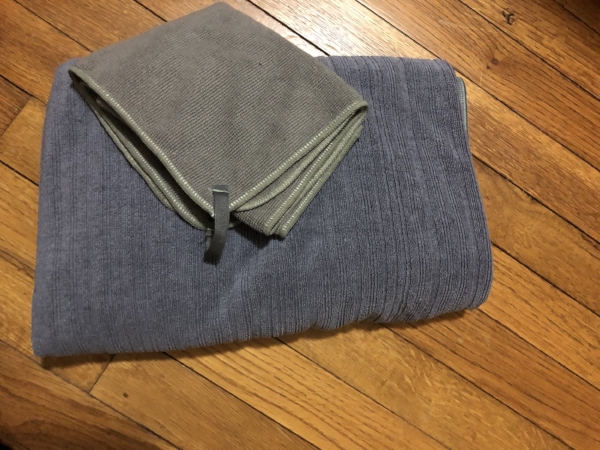Packing for Annapurna
/If you are wondering what to assemble in the way of gear for Annapurna, I thought I’d give you an idea of what I pack. This will not detail all of the items, but will give you a visual idea of what I’m bringing on the mountain.
Backpack and water carrying strategy
38 L backpack (this just needs to be big enough to carry your layers for the day, snacks, and water - 30-40L is ideal), Water bladder, and Water bottle for electrolyte mixture (I don’t put flavored water in my water bladder because it’s more difficult to clean)
2. Sleeping system
34 degree sleeping bag (there is no heat in the rooms near the summit, so it’s personal preference on the level of your sleeping bag rating), sleeping bag liner, and an inflatable pillow
Traditionally there are quilts and pillows on the beds in the teahouses, but they ask everyone to bring their own blackets/sleeping bag, so no one is touching these items. Now covid may change this. I put the quilt and pillow they provide under my sleeping bag for extra padding. Some people chose to bring a pillow case and cover the pillow and use it for sleeping, but post-covid I would not count on this set-up.
3. Hiking apparel
I use pants and skirts with leggings (guys could consider kilts ;-)) and breathable tops in various sleeve lengths (my favorites are Patagonia Capilene tops and shirts with silver in them for odor control). Layers are good! I pack my clothes in a dry bag or ziplock to make sure they stay dry in my backpack.
4. Head/neck coverage
Buff, trucker hat, and a wool beanie (I didn’t throw my gloves into this picture, but I use a glove liner. If you get really cold hands, you may want something warmer). The Buff is to protect the back of my neck from the sun. We are exposed to the sun for the final push to the summit, so keeping yourself covered in sunscreen and protective clothing is a good idea. And don’t forget your lips, sunscreen in your lip balm is a must!
5. Jackets
I love these jackets for layering. The first (light grey) seems like nothing, but it provides a wind barrier and a little warmth. The second is a zip-up athletic layer for added warmth. The last (in pink) is my down jacket, which I used at Base Camp, but once we started hiking it was too warm for me.
6. Rain gear
You never know when some clouds could roll in, so being prepared with waterproof layers is a good idea. My pants are full-zip for easy entry and provide good protection from the elements, but I’m still hunting a pair that doesn’t make me sweat.
7. Boots and Hiking Poles
The poles are helpful on descents and for navigating stairs. These boots are like glue on the rocks, but the most important points of your footwear are that they are waterproof and you’ve spent time wearing them.
8. Socks
I’m a big fan of DarnTough socks, but any wool hiking socks will work. Wool is good for moisture and odor control.
9. Bathroom bag
Not to get too detailed here, but the bathrooms are mostly squatty potties and do not provide a means of cleansing. So this is my arsenal for bathroom trips. I also bring wipes to use in place of the shower when it’s too cold to think of showering.
10. Water filter and med kit
A med kit with the essentials for minor problems (bandaids and ointments), which I’m happy to share. Once we get to a certain point in our hike the water will no longer be drinkable without filtering. I will have two Sawyer filters available for people to use. Water is also available for purchase from the teahouses, which are given the UV light treatment. I prefer to filter my own water, so it’s up to you if you want water from my filter or you want to purchase water from the teahouse.
11. Miscellaneous items
Outlet adapter and a battery pack (not necessary, but I have it from another trip and will use it instead of paying to charge my phone). Some of the outlets in the teahouses are universal outlets, and do not need an adapter.
Towels - these are not provided at the teahouses. I washed my hair at one of the teahouses that had heat in the common room so that my towel would dry (and my hair) before needing to pack it up again. This grey towel gets small when packed into its little bag, it’s hard to tell in the picture.
12. You can leave a bag at the hotel in Kathmandu with your extra travel clothes (if you have luggage locks it’s a good idea to bring them - one for the bag at the hotel and another for the duffel (used on the mountain for the porters to carry) - I didn’t have locks on my first trip, and it wasn’t an issue, but it’s a good precautionary measure).












